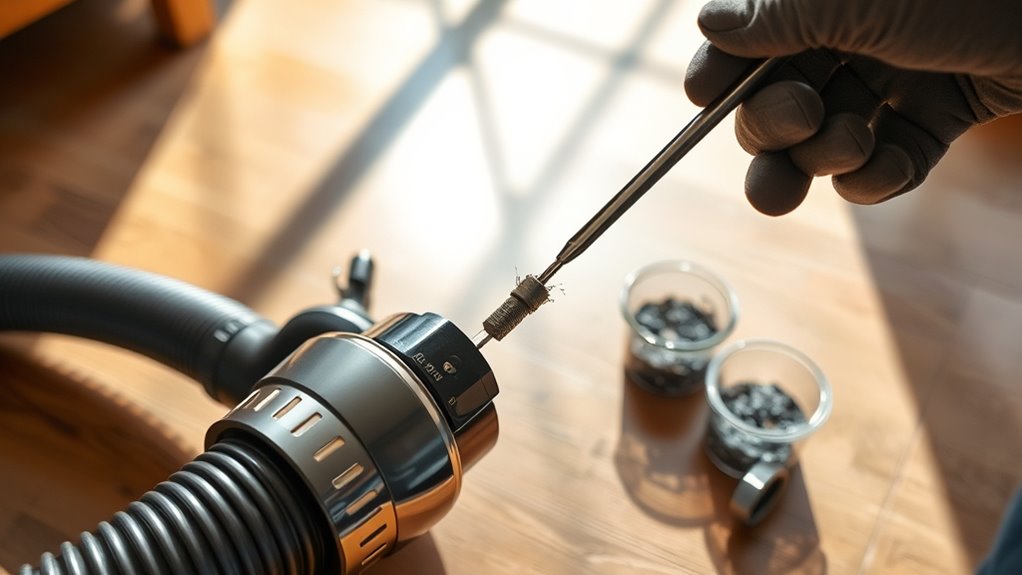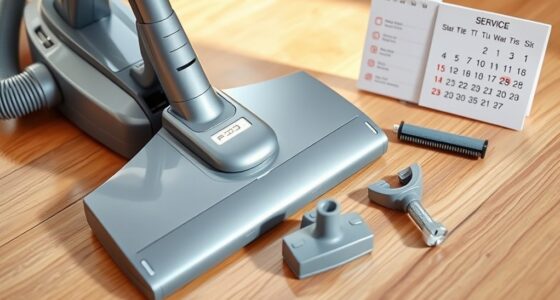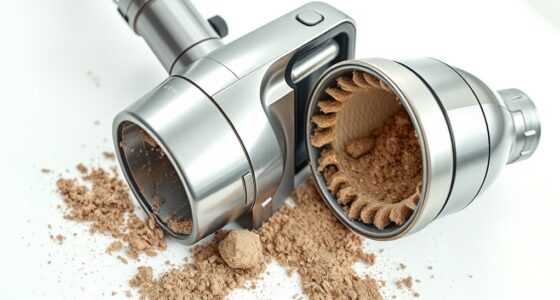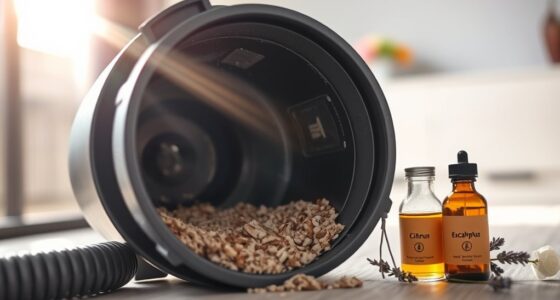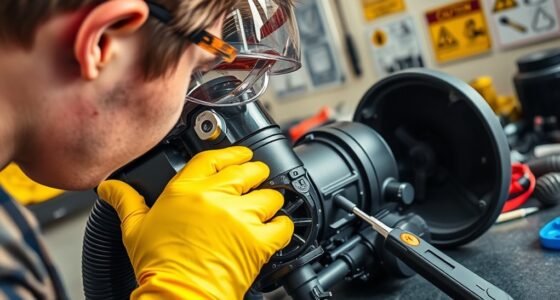If your vacuum hose is clogged, start by detaching it from the main unit. Use a broomstick to dislodge any large debris. Then, pour in a mixture of ½ cup baking soda and ½ cup vinegar, letting it sit for 2-3 minutes. Rinse the hose thoroughly with warm water. After cleaning, hang it to dry completely. To guarantee long-lasting performance, explore more maintenance tips that can keep your vacuum running smoothly.
Key Takeaways
- Detach the vacuum hose from the main unit to ensure safety before starting the unclogging process.
- Use a broomstick to push out large debris causing blockage in the hose.
- Pour a mixture of ½ cup baking soda and ½ cup vinegar into the hose and let it react for 2-3 minutes.
- Rinse the hose thoroughly with warm water from both ends to remove loosened debris.
- Inspect and clean the hose monthly to prevent future clogs and maintain optimal performance.
Signs Your Vacuum Hose Is Clogged
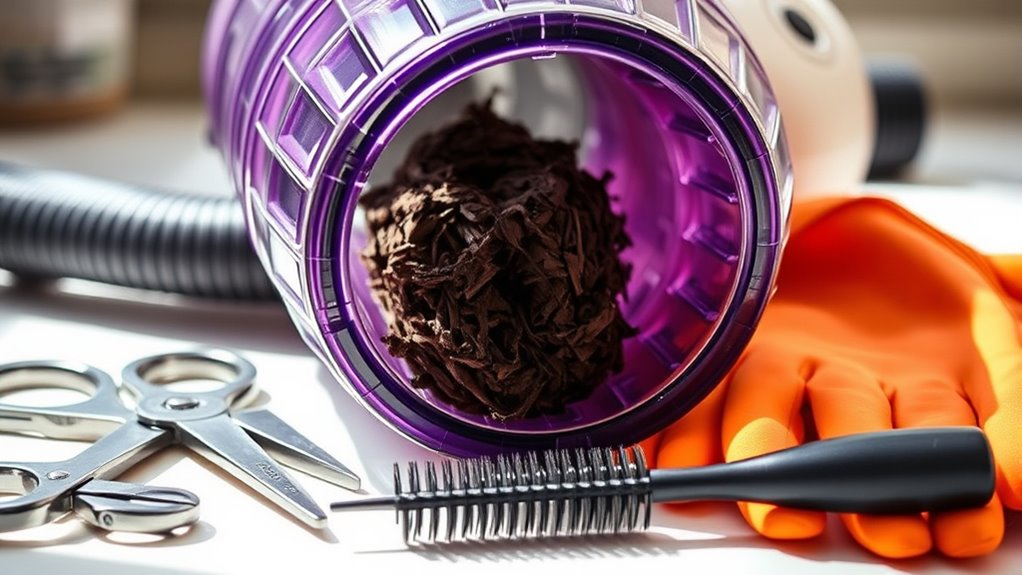
A vacuum’s performance hinges on a clear hose, and noticing signs of a clog can save you time and effort.
One of the first indications that your vacuum hose is clogged is a loss of suction while using your vacuum cleaner. You might also experience difficulty in picking up dirt, even on clean surfaces, suggesting potential blockages.
One key sign of a clogged vacuum hose is a noticeable loss of suction, making dirt pickup challenging.
If your vacuum begins to blow out dust or makes unusual noises, it’s likely that the hose is obstructed. Additionally, foul odors could emanate from rotting food debris trapped inside the hose, signaling a clog.
Finally, look for visible obstructions, such as dark areas or bends in the vacuum hose, as these can confirm the presence of clogs that need your attention. Regularly checking for suction power issues can also help you maintain optimal performance and prevent clogs before they occur.
Tools Needed for Unclogging
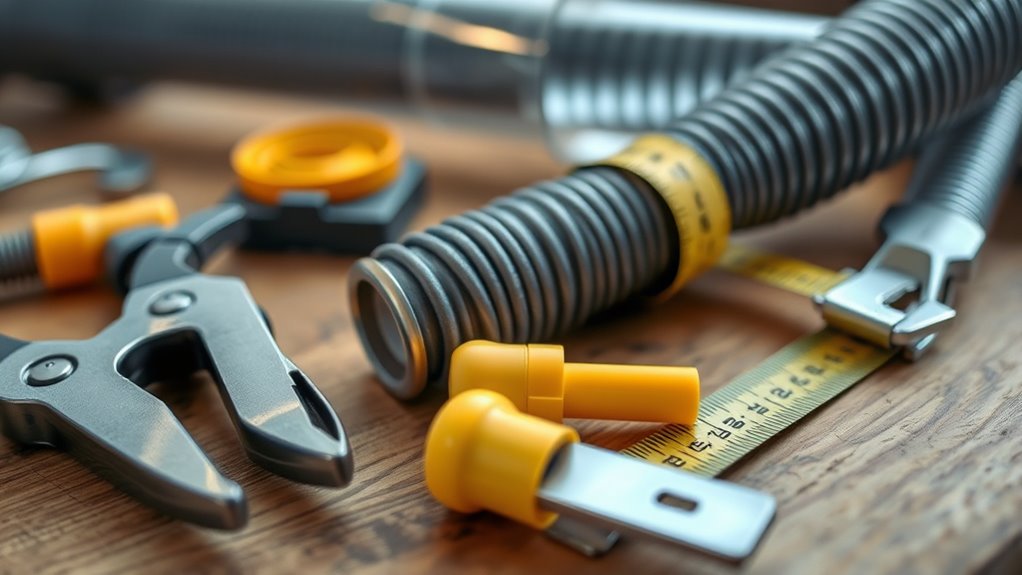
When you’re ready to tackle a clogged vacuum hose, having the right tools on hand makes all the difference. Here are a few essentials you’ll need:
- Broomstick: Perfect for pushing out large clogs.
- Bottle cleaning brush: Great for scrubbing stubborn grime inside the hose.
- Baking soda and white vinegar: These create a bubbling reaction to break down buildup.
- Garden hose: A strong stream of water helps flush out pesky clogs quickly.
With these tools, you’ll be well-equipped to handle any clogs in your vacuum hose.
The broomstick will aid in dislodging debris, while the baking soda and white vinegar combo works wonders against buildup.
Don’t forget the water for a thorough rinse!
Step-by-Step Process to Unclog the Hose
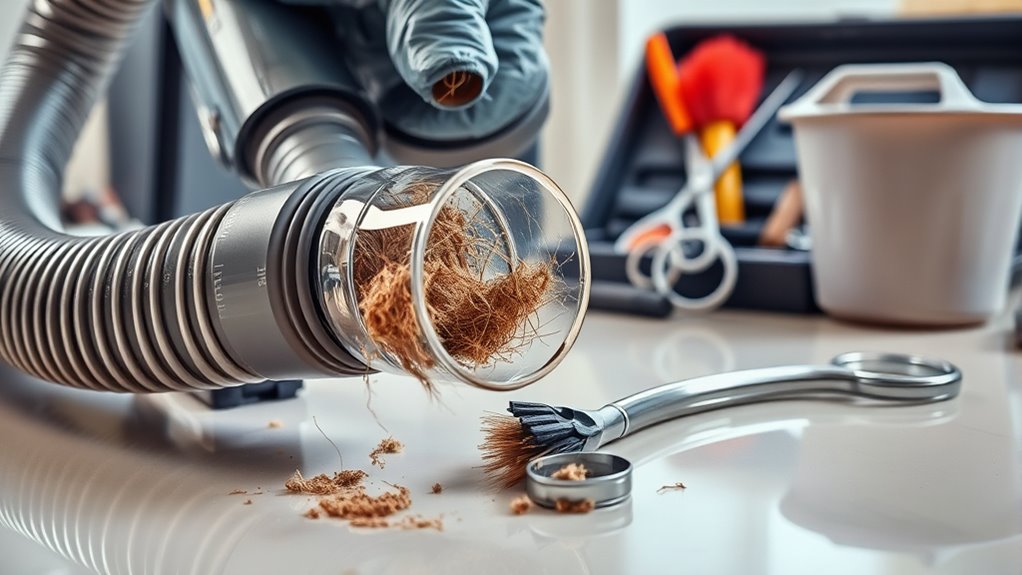
To effectively unclog your vacuum hose, follow these simple steps.
Start by detaching the vacuum hose from the main unit, ensuring safety and easy access.
Detach the vacuum hose from the main unit for safety and easier access to tackle the clog effectively.
Use a broomstick to gently push through the hose, feeling for resistance to locate any large debris causing the blockage.
Next, introduce a mixture of ½ cup baking soda followed by ½ cup of vinegar into the hose. Allow it to react for 2-3 minutes to break down stubborn debris.
Afterward, rinse the hose thoroughly with warm water, flushing from both ends to eliminate all remnants of the cleaning solution and loosened debris.
Finally, hang the hose to dry completely before reattaching it to the vacuum, checking for moisture that could cause hazards.
Cleaning and Maintenance Tips
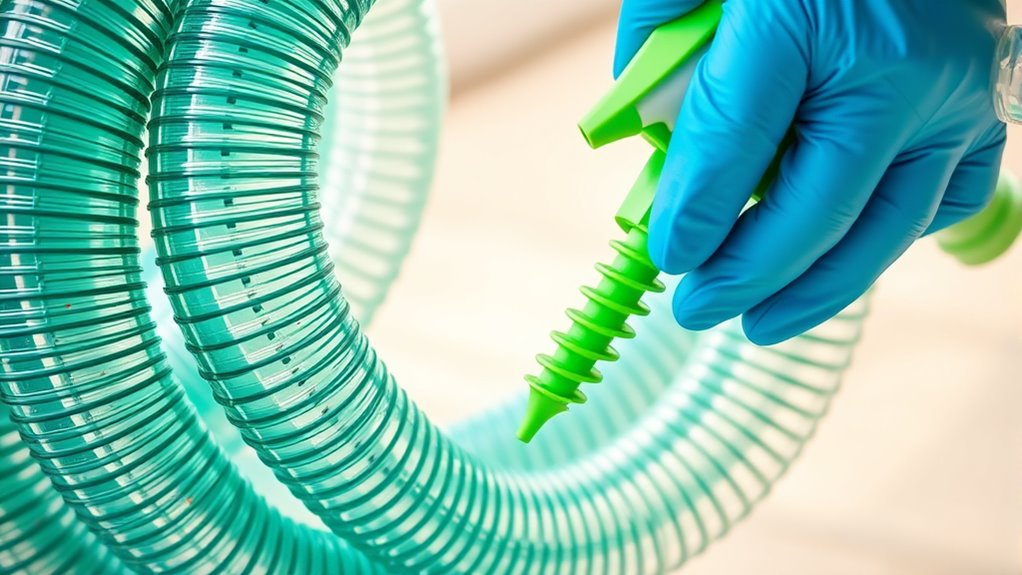
After successfully unclogging your vacuum hose, keeping it clean and well-maintained will guarantee it continues to perform at its best.
Regular maintenance is key, so make it a habit to inspect and clean your vacuum hose at least once a month.
Here are some tips to help you:
- Use a mixture of baking soda and white vinegar for effective cleaning.
- Let the mixture sit for 2-3 minutes to break down grime.
- Always unplug your vacuum before doing any maintenance.
- Allow the hose to dry completely by hanging it up to prevent mold.
Preventative Measures to Avoid Future Clogs
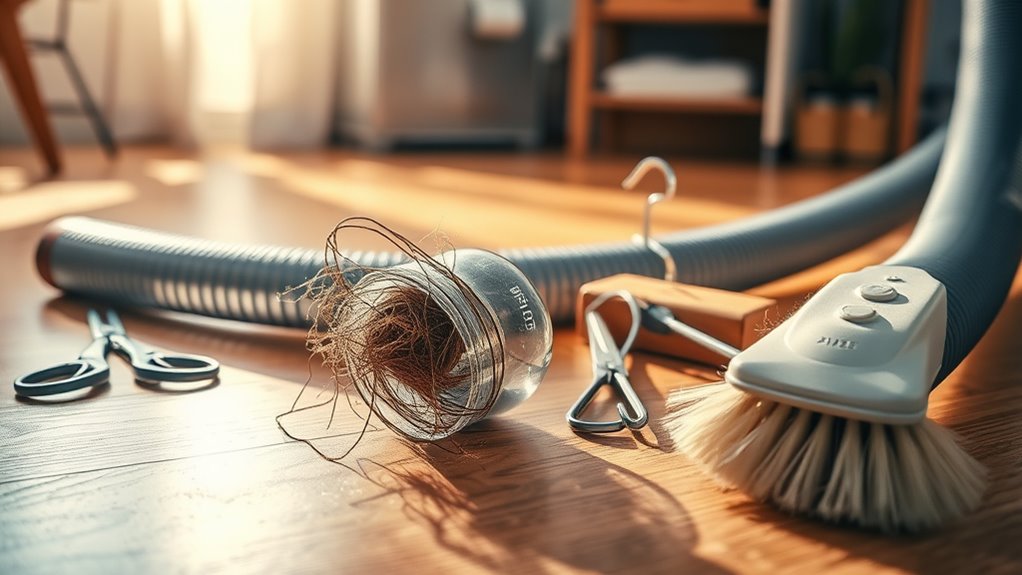
Though it might seem like a hassle, taking a few simple steps can greatly reduce the chances of clogs in your vacuum hose.
Start by regularly inspecting your vacuum hose and attachments for blockages before each house cleaning session. Remove large debris from the floor to minimize the risk of debris getting stuck in the hose.
Use vacuum attachments designed for narrow spaces to capture hidden dirt. Implement a monthly cleaning routine for your hose with a vinegar and baking soda mixture to prevent buildup.
Finally, educate everyone in your home about proper vacuuming techniques, such as avoiding heavy materials that could lead to clogs.
Frequently Asked Questions
How to Get Blockage Out of Vacuum Hose?
To get a blockage out of your vacuum hose, start by unplugging the vacuum and detaching the hose.
Use a broomstick to gently push through the hose, feeling for any clogs.
If you encounter stubborn debris, mix ½ cup of baking soda with ½ cup of white vinegar and pour it into the hose.
Let it sit for a few minutes, then rinse thoroughly with warm water and allow it to dry completely before reattaching.
How to Get Something Unstuck From a Vacuum Hose?
To get something unstuck from your vacuum hose, start by detaching the hose from the vacuum.
Inspect it for any visible blockages. Use a broomstick to gently push through, feeling for resistance.
If you can’t dislodge the object, grab some needle-nose pliers to carefully pull it out.
For tougher clogs, run warm water through the hose, sloshing it back and forth to help dissolve the blockage.
Always check for cracks afterward!
How Do You Unclog a Central Vac Hose?
Imagine your central vac hose as a river, flowing smoothly until a boulder disrupts its path.
To unclog it, detach the hose from the unit and check both ends for visible blockages. Use a hooked wire or toilet snake to gently fish out stubborn debris.
If that doesn’t work, try blowing air in the opposite direction. Rinse it out with water, then let it dry completely before reattaching.
Your vacuum will thank you!
How Do You Clean a Suction Hose?
To clean a suction hose, first, detach it from your vacuum and make sure it’s unplugged.
Use a broomstick to gently push through the hose, dislodging any clogs.
Next, pour in a mixture of ½ cup baking soda and ½ cup vinegar, letting it sit for 2-3 minutes.
Rinse thoroughly with warm water from both ends, then hang it to dry completely before reattaching.
This’ll keep your hose in great shape!
Conclusion
Now that you know how to unclog your vacuum hose, you can tackle the task with confidence. Remember, a clean vacuum is like having a superhero in your home, ready to battle dirt and debris! Regular cleaning and maintenance will keep your vacuum running smoothly, saving you time and hassle. By following these tips, you’ll guarantee a clog-free experience, so you can enjoy a dust-free space without the frustration of an obstructed hose. Happy vacuuming!
